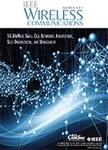版权所有:内蒙古大学图书馆 技术提供:维普资讯• 智图
内蒙古自治区呼和浩特市赛罕区大学西街235号 邮编: 010021

作者机构:Nokia Stand Coppell TX USA Nokia Bell Labs New Providence NJ 07974 USA
出 版 物:《IEEE WIRELESS COMMUNICATIONS》 (IEEE Wirel. Commun.)
年 卷 期:2025年第32卷第1期
页 面:22-27页
核心收录:
学科分类:0810[工学-信息与通信工程] 0808[工学-电气工程] 08[工学] 0812[工学-计算机科学与技术(可授工学、理学学位)]
主 题:State feedback Computational modeling Transmitting antennas Receiving antennas Massive MIMO Machine learning Complexity theory Uplink Interoperability Channel state information
摘 要:With increasing numbers of transmit antennas and the use of wider spectra, channel state information (CSI) feedback for massive MIMO systems can incur a large overhead in uplink capacity. For a 32-antenna system operating on 13 frequency sub-bands, uncompressed channel state feedback would consume about two Mb/s of uplink capacity for each receive antenna, and so compression of the feed-back is essential in practice. Communication theory provides foundational models for the compression of large arrays of numbers and it has been applied to reduce this overhead significantly. However, simplifying assumptions typically used to make these models tractable leave significant room for improvement. With the maturity of machine learning, alternative data-driven approaches have received much attention over the past few years. These approaches have a higher complexity and computational footprint, but demonstrate improved accuracy compared to legacy models and promise more robust customization and interoperability. In this article, we give an overview of both the legacy model-driven and the emerging data-driven approaches for CSI compression, provide macroscopic comparisons of the performance of the two approaches based on both efficiency and flexibility, and discuss the maturity of this technology for large-scale deployment in future 5G-Advanced and 6G systems.